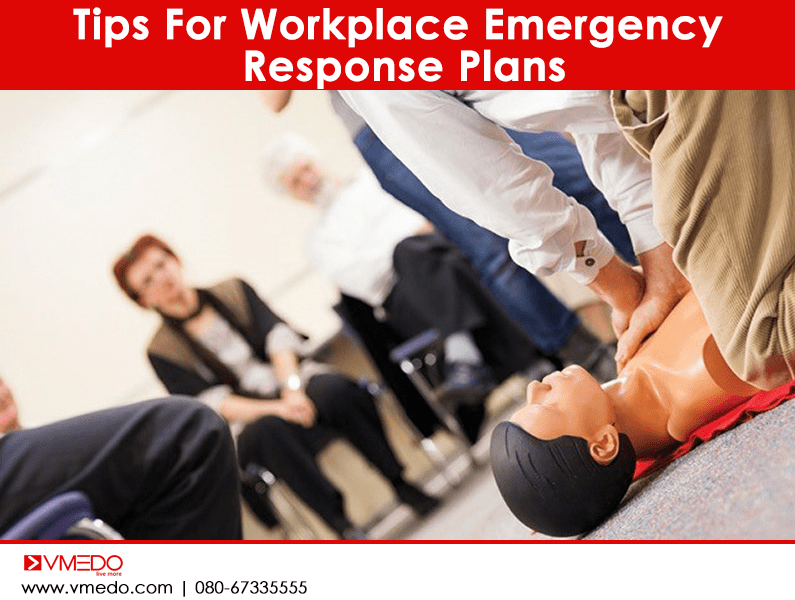An emergency is a situation that can happen to anyone, anywhere at any moment that poses risk to health, resources, and the environment.
Workplace Emergencies may be natural or man-made and they include the following:
- Floods
- Hurricanes
- Fires or Flammable materials
- Toxic gas releases
- Toxic Chemical Spills
- Radiological accidents
- Explosions
- Civil disturbances.
The best way to reduce the impact is, to prepare to respond to an emergency before it happens. So it is very important for every organization to develop and implement an emergency response plan for protecting its employees & resources. This can minimize the impacts of the emergency on employees, the environment, and other resources.
An emergency Response plan covers well-designed emergency actions that employers and employees must take to ensure employee & resource safety from fire, toxic gas release, and other workplace emergencies.
When developing an emergency response plan for your workspace, it’s important to look at a wide variety of possible emergencies that could occur from different sources. Developing an Emergency Response plan means you should do a complete hazard assessment about different physical or chemical hazards in your workplaces that could cause different impacts on your resources.
There are 5 important objectives in the Emergency Response Plan. They are:
Prevention: Prevent, avoid, or stop an imminent, emerging threat.
Protection: Protect employees, public and other assets against threats.
Response: Immediate & efficient response to save lives, protect property, and the environment.
Mitigation: Minimize the loss of life and risks, threats, and impacts.
Recovery: Complete Restoration, and revitalization of resources, health, and business affected by the incident.
Here are Few Tips for Workplace Emergency Actions plans:
- Objectives: Identify the objectives of Emergency Response plan for your company or workplace. Objectives may include hazard prevention, risk mitigation, emergency response, saving lives and business continuity.
- Conduct a Risk Assessment: Check the review assessment, Review different type’s hazard scenarios identified during a risk assessment.
- Identify Response Resources: Identify the eminent response resources to stabilize the situation that includes Emergency responders, equipment, and internal as well as external sources.
- Create an Emergency Management Team: This requires response plan knowledge, Emergency management training and mock drills.
- Establish Hazard-Specific Response Procedures: Depending on the type of emergency, response planning should be structured to provide an effective emergency response.
- Coordinate with emergency services: Work with different emergency services such as fire, police, ambulance, and emergency medical services for their timely response to stabilize any incidents at your facility.
- Emergency Response & First-aid Training: First Aid Training is essential for everyone to know what to do when an emergency strikes. This could save the life during an emergency. It should include First Aid CPR Training & Emergency Response plan familiarization for volunteers.
- Emergency Response Mock Drills and Exercises: Corporate emergency preparedness drills and exercises, which may include fire and evacuation drills, emergency escape procedures, knowledge & tactics, to restore resources.
- A preferred method to Report Emergencies: Workplaces emergencies should be reported as early as possible to reduce the loss. And there should be proper facilities to notify the emergencies such as internal telephone numbers or intercom, public address system, alarm system, proper authorities for fire, medical or rescue services.
- Educate the Employees: Educate your employees about the types of emergencies that may occur and train them in the proper course of action. Make sure all your employees understand the function, objectives, and elements of your emergency response plan, including types of possible emergencies, reporting procedure, evacuation plans, and shutdown procedures.
- Educate them about Personal protective equipment: Personal protective equipment include First Aid kit, Safety glasses, goggles, or face shields for eye protection, hard hats and safety shoes, Proper respirators, Chemical suits, gloves, and usage of first aid kits.
Also Read: Why should Indian companies train their employees with First Aid skills?
If you are looking for first aid, CPR, AED, and Basic Life Support training program Click here and Register.

